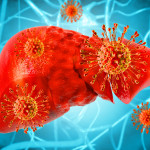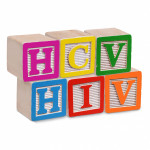HIV-positive men who have sex with men (MSM) diagnosed with acute hepatitis C virus (HCV) infection are just as likely to clear their HCV with a 24-week course of treatment as those treated for a full 48 weeks, according to a report published online May 25 in AIDS.
A new epidemic of HCV infections among MSM living with HIV has emerged and continued to grow during the past 10 years. Currently this epidemic is isolated mostly to urban areas in Western Europe, the United States and Australia, and it has a new twist: Most of the HCV infections are associated with sexual behaviors and not injection drug use.
Public agencies now recommend regular HCV screening in HIV-positive MSM and also suggest that providers pay close attention to the early signs of acute HCV infection, such as a sudden spike in key liver enzymes. Because of these stepped up surveillance methods, more and more HCV infections are being caught during the acute phase, which is within the first several months after HCV is transmitted.
This is good news, as HCV treatment is about three times more successful in people in the acute stage of infection, compared with those who aren’t diagnosed until after the acute phase has passed. What remains unsettled, however, is whether the course of HCV treatment in acutely infected individuals needs to be the full 48 weeks recommended for people who are chronically coinfected with both HIV and HCV, or whether treatment can be administered for half as long.
To determine the answer to this question, Femke Lambers, MD, from the Department of Research at the Public Health Service of Amsterdam, and her colleagues compared 24 weeks of standard HCV treatment (pegylated interferon combined with weight-based dosing of ribavirin) with 48 weeks of standard treatment in HIV-positive MSM with acute HCV infection. Of the 50 who were followed, 21 were slated to receive 24 weeks of treatment and 29 to receive 48 weeks. The two groups were similar in most respects, but the actual course of treatment was at times a little shorter or longer than intended for both groups.
Ultimately, Lambers and her team found that the duration of HCV treatment had no significant effect on whether the men maintained undetectable HCV levels for 24 weeks after completing their course of HCV treatment. This is known as a sustained virological response (SVR), and experts generally accept that an SVR is equivalent to being cured of HCV.
Overall, the SVR rate of 76 percent was about three times higher than is typically observed in individuals with chronic infection undergoing HCV therapy, confirming that catching and treating people during the acute phase is highly desirable. Though the cure rate was higher in those who received 48 weeks of treatment—79 percent versus 71 percent—this difference was small enough that it could have occurred by chance.
“This suggests that 24 weeks of treatment might be sufficient,” the authors comment. “The shorter regimen would be of great advantage for patients, since both peginterferon and ribavirin can cause serious side effects.”
The authors also concluded by observing that neither the participants’ CD4 count, nor their HIV treatment appeared to affect whether they achieved an SVR, and they recommended that subsequent studies should explore this further.
Advertisement
Advertisement
Advertisement





Comments
Comments